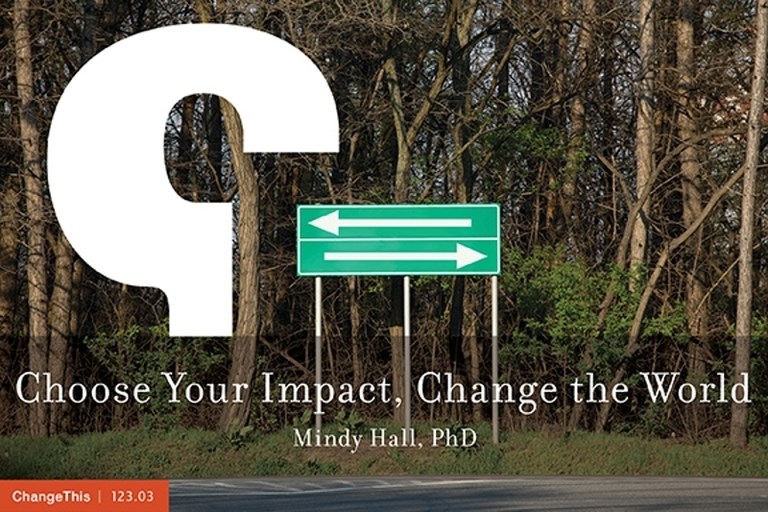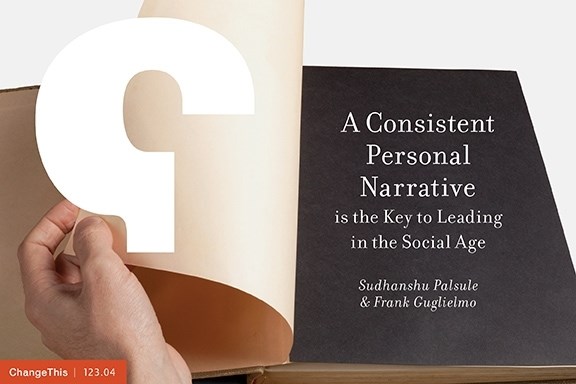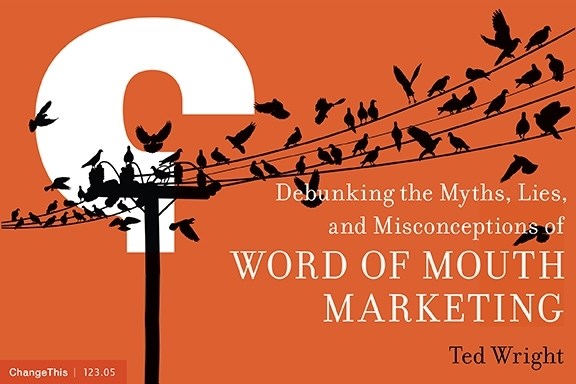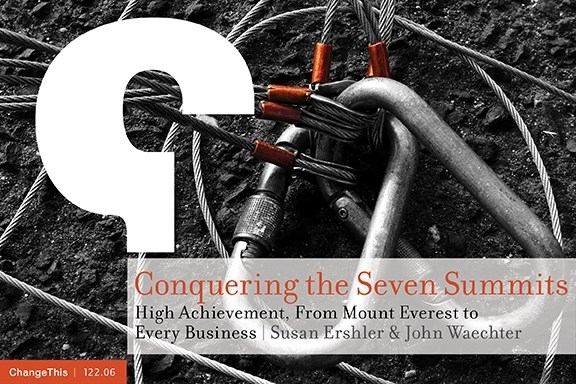ChangeThis RSS
"Who do you want to be as a leader? What impact do you want to have? How do you want people to experience you? No matter where you fall in the organizational structure, your ability to shape both the organizational culture and how others perceive you is a direct result of the level of intention with which you operate. What does it mean to operate with intention? It is consciously deciding to lead by design rather than by default; being mindful of who it is you want to be and then living into that picture twenty-four hours a day. It is about seeing opportunities every day, in every interaction, to shape the tone, the experience, and the outcome of those interactions. It is being aware that everything you do sends a message: what you say and how you say it, what you do and how you do it, even what you choose not to say or do. It is realizing that the system you work in does not tell you who you get to be; you decide who you get to be.
Seeing your 'self' as the primary tool for achieving high-level results is a concept that may seem like common sense, but it is far less commonly practiced and even less often developed in professionals as they grow in their careers."
Continue reading
"In the new world of deep interconnectivity, what we call the Social Age, leaders are confronted with challenges that constantly test 'who they are' while making each of these tests public with everyone able to comment. ... Social Age leadership challenges ... five areas of 'who we are' as leaders that most impact our leadership narrative. ... There is no one right way to lead in these five areas. Rather, they are aspects of who you are as a person. Thriving as a leader in the Social Age means taking a good look at your self and understanding how you are most productive in each of these five areas."
Continue reading
"A 2011 university study suggested people check their phones 34 times per day. However, industry insiders believe that number is closer to an astounding 150 daily sessions.
Face it, we're hooked.
The technologies we use have turned into compulsions, if not full-fledged addictions. ...
How do companies, producing little more than bits of code displayed on a screen, seemingly control users' minds? What makes some products so habit-forming?
For many products, forming habits is an imperative for survival. As infinite distractions compete for our attention, companies are learning to master novel tactics to stay relevant in users' minds. Today, amassing millions of users is no longer good enough. Companies increasingly find that their economic value is a function of the strength of the habits they create. In order to win the loyalty of their users and create a product that's regularly used, companies must learn not only what compels users to click, but also what makes them tick."
Continue reading
"If you have ever tried to discuss word-of-mouth marketing, you've likely confronted the many myths and misconceptions that surround it. It may be statements like "Oh, that costs too much" or "There's technology that does that for you already," or it may be a question like "Isn't that just social media?" All of these people come from a place of wanting the best for your company. In the many years that I've been doing this, I've heard every single one of them. By now, I've gotten pretty good at responding. Maybe I can help you do it too."
Continue reading
"Perseverance is the singular quality that Everest summiteers and the business elite have in common. We don't believe that perseverance is an intrinsic quality possessed by the fortunate few. On the contrary, we're convinced that anyone can accomplish great feats if they summon the will required to overcome seemingly insurmountable obstacles. Successful individuals know how to motivate themselves to achieve peak performance. They know what internal levers to pull when their engines of determination start to flag."
Continue reading











